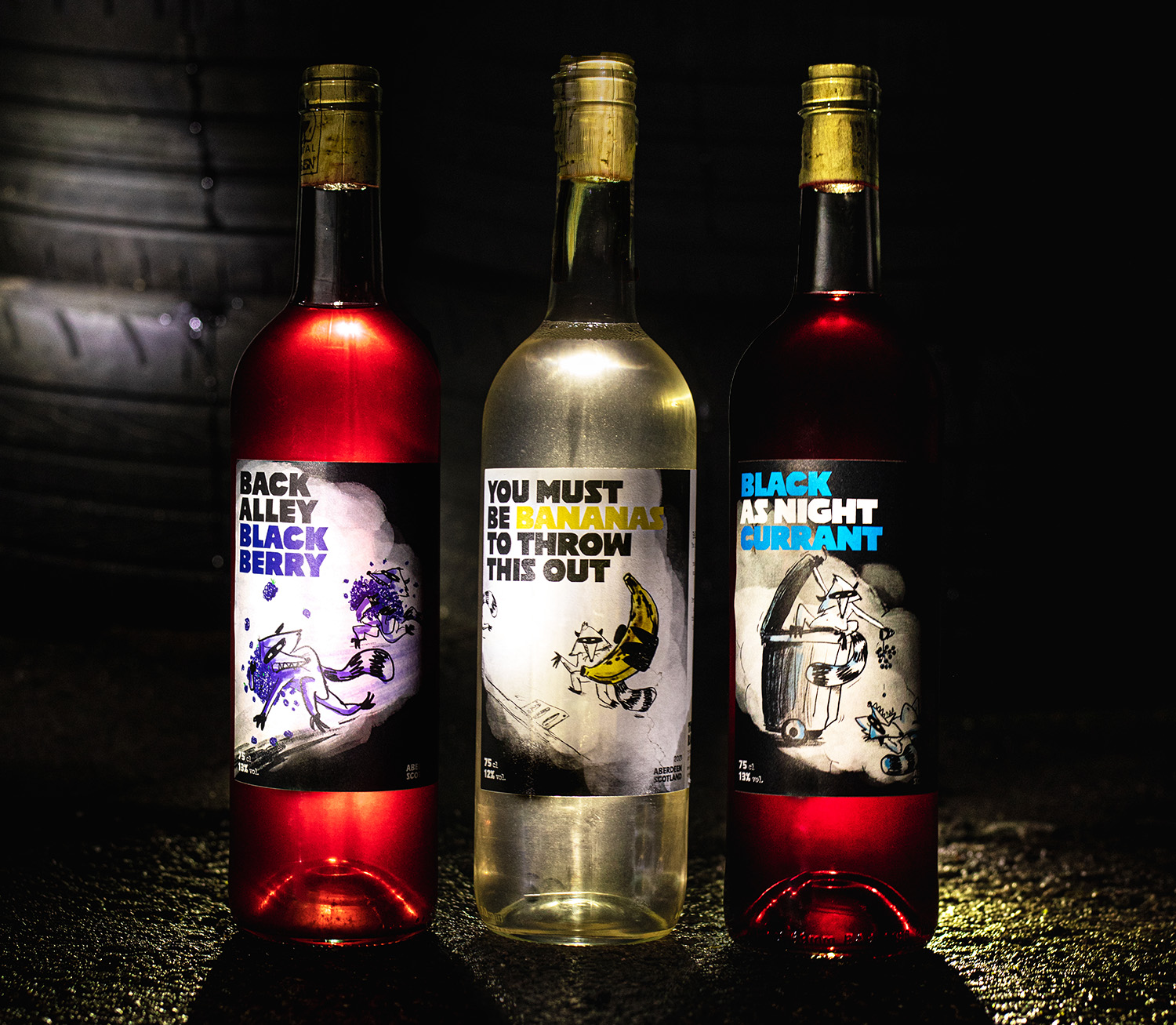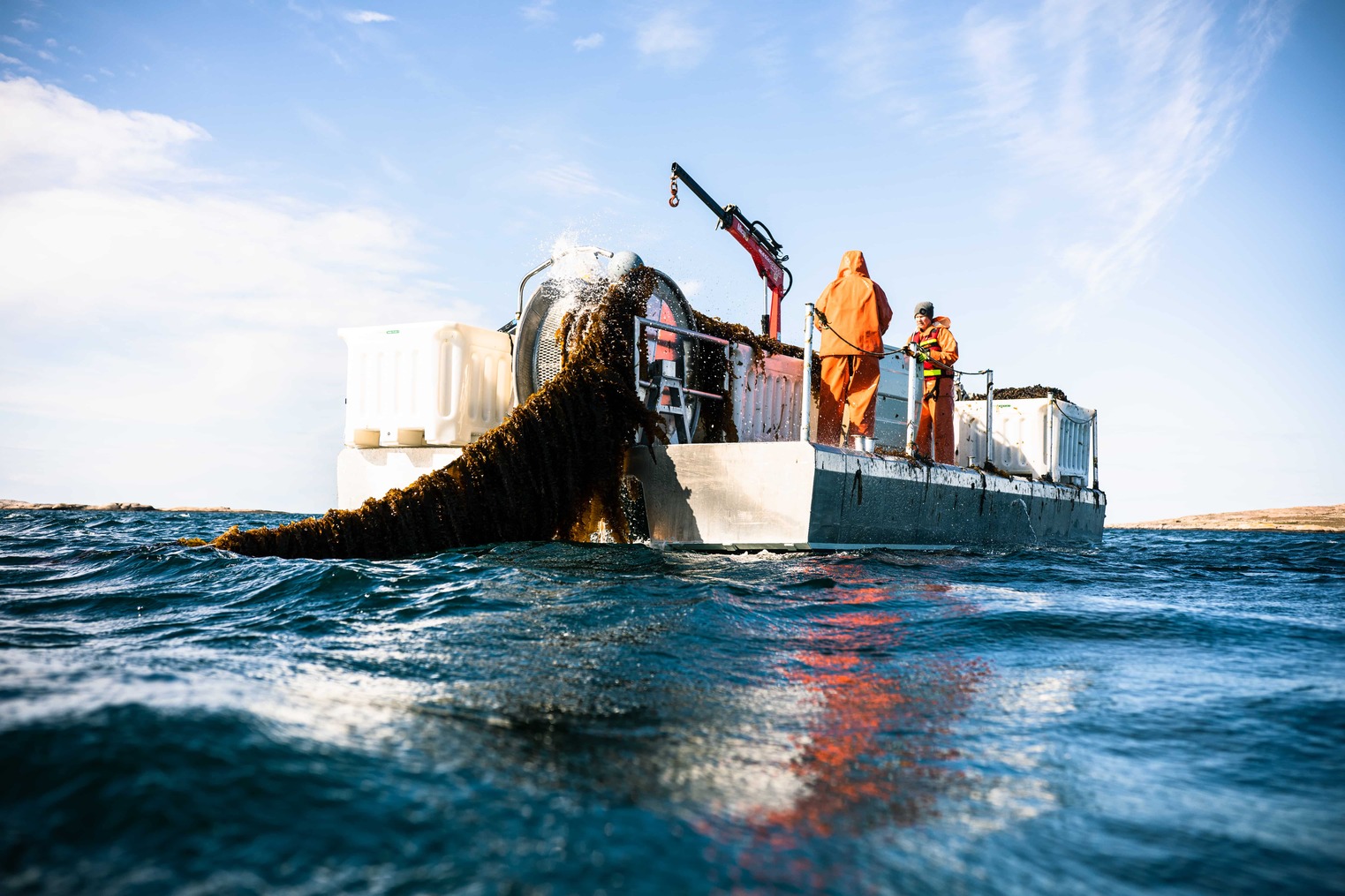We saw 0kg of CO2e: The case of Two Raccoons, fruit surplus, and allocating emissions
Two Raccoons are winemakers with a purpose… or rather, winemakers who give a purpose. Two Raccoons makes delicious wines from good fruit surplus which otherwise would go to waste – and collect award after award in Scotland while doing it. And it’s not only their mission that makes them interesting, it’s their climate footprint too. Their primary ingredient, fruit surplus, has a climate footprint of zero – not net-zero, absolute zero! We’ve seen saved fruit before, but the footprint was not zero. How is that possible?
Here we are, starting our CarbonCloud day browsing around ClimateHub when we stumble upon the Two Raccoons wine. Something stood out: How can agriculture, the usual suspect of the majority of emissions be as low as 14%? We had to find out. Customer Success told us that Two Raccoons use fruit surplus (or discarded fruit) as their main ingredient for wine and it has no emissions. However, “saved fruit”, a by-product gaining popularity among beverage producers still has a footprint. What is the difference between saved fruit and fruit surplus?
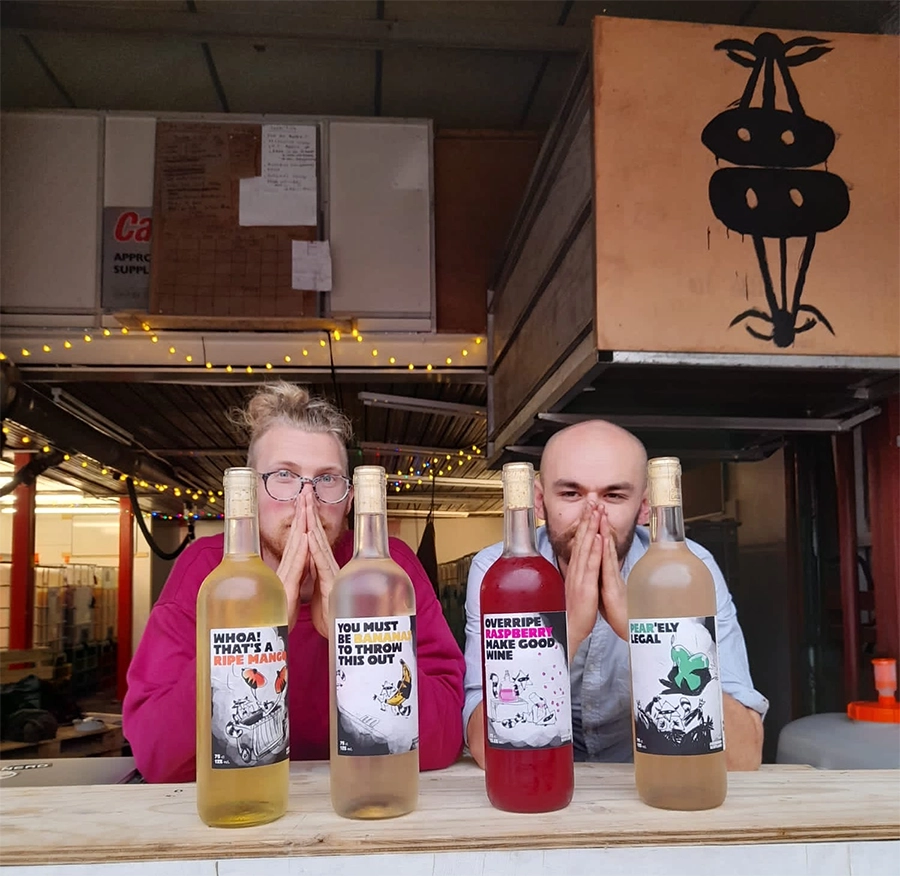
We went to the two sources closest to the issue to find out: The founders of Two Raccoons, Elliott Martens and Lasse Rasmussen to hear about their processes and the mysticism of the food supply chain and our very own scientist, Emma Jonson Ph.D., for tutoring on how emissions are allocated.
Newsletter to-go?
Our special today is our Newsletter, including snackable tips, hearty climate knowledge, and digestible industry news delivered to your inbox
Can Raccoons make wine?
Lasse and Elliott started Two Raccoons in their apartment. As students, Lasse and Elliott used to live like raccoons. They would dumpster dive, find excessive amount of good fruits, and stash their fridge to the brim. As their fridge and freezer ran out of space, they started making wine from their fruity loot to preserve it. A few months later, they decided to create a business out of it and name it after their own lifestyle. Two Raccoons discovered a unique opportunity to give a purpose to the overlooked fruit surplus of the supply chain and have already snatched 7 awards and grants. While scavenging for loot throughout the supply chain, they discovered the industry’s dirty secret.

We struggled a lot when we were getting in touch with fruit suppliers because obviously food waste is such a massive taboo: No one wants to admit that they have food waste. We are trying to break that taboo, make the whole supply chain more transparent. It wasn’t until Baxters, the jam and canned fruit producer, gave us 4.3 tonnes of frozen fruit, that we got our breakthrough. While this first collaboration has helped Two Raccoons break the ice within the Scottish fruit industry, the stigma surrounding food waste is yet to be broken
Elliott Martens
Co-founder, Two Raccoons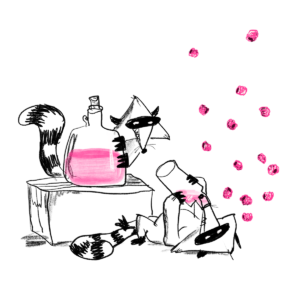
Is fruit surplus the same as saved produce?
Even with all the media attention, awards and noise (dressing the part of the raccoons is just a treat that helps!), the fact that Two Raccoons go above and beyond to minimize food waste has another dimension in the climate impact domain. Food surplus is not just by-products – they are a singular use case. What is fruit surplus and what is the difference with so-called saved fruit?

Wonky fruit usually happen at the farm level. It is produce that doesn't grow to the right standard. You can have a fruit that is not up to norms, but then another company is using it and giving it a purpose. If they're doing that again and again then it’s not surplus anymore because the chain has been looped.
Fruit surplus –what we get– is past the farm gate. These surplus fruits have already passed quality checks and it happens throughout the supply chain, when someone orders too much or frozen food that has just passed the best before date but is still perfectly usable. When that happens and it is about to be thrown away, it becomes discarded fruit. And that's when we take it!
Lasse Rasmussen
Co-founder, Two RaccoonsTwo Raccoons are on to something there: When companies can’t use produce for their intended purpose e.g. supply supermarkets, then this produce can be sold to another company for another purpose. It becomes a by-product, the loop is closed and the supply chain continues. But discarded fruit would otherwise be on a clear path to waste. The food surplus that Lasse and Elliott are using would otherwise go to the landfill or a composting facility. And here’s the catch: These discarding activities come with a price – but giving out this produce to Two Raccoons is more ethical, a potential marketing opportunity, and above all, it’s free!
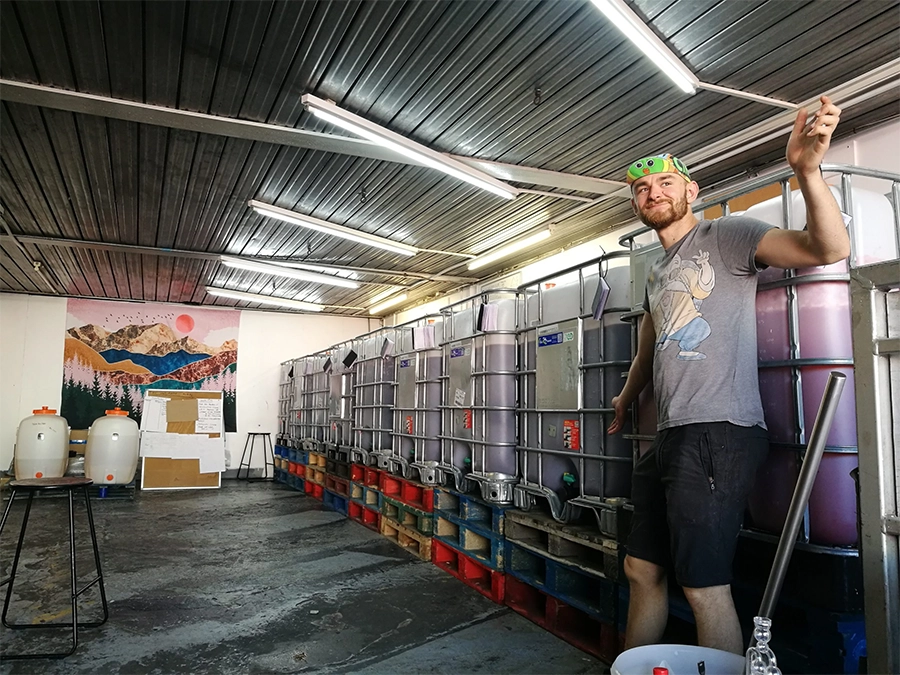
Why fruit surplus has zero climate impact
The price tag on by-products and the lack of an economic value of fruit surplus have implications on the climate footprint. The connection between price and climate impact is not instant or intuitive, so we asked Emma Jonson Ph.D., Scientist at CarbonCloud, for the scientific background.

Emma Jonson, Ph.D, Scientist at CarbonCloud
The main question is “does the product have an economic value or not?”. If the fruit is a true waste product without any economic value, then we don’t attribute any emissions to it. Or rather, we don’t attribute the climate impact from the production of the food surplus to that part of the product stream.
Let’s remark here that it is not the fruit itself that has a climate impact, it is the activities around their production that do. Greenhouse gas emissions come from the soil, the use of machines, the production of fertilizers, etc. Then it’s a question of how to allocate those emissions to the products that are the result of the activities.
In life cycle assessment this is called Allocation and it has several approaches. At CarbonCloud, we model after Economic Allocation, because we hold the stance that economic activities are the most connected to what causes greenhouse gas emissions. The reason emission-generating activities happen is the idea of having an economic income from these activities. If the outcome would be produced with no economic value, then we assume that these agricultural activities wouldn’t take place. So we conclude that income is the driving force of emission-generating activities.
In the case of allocating emissions in fruit surplus, let’s say that from a single batch you have some fruit that has an economic value and some fruit that does not pass certain standards to have an economic value at all. In this case, we attribute the entire climate impact of this batch to the fruit that have an economic value. So it is not that the climate impact is lost, it is simply allocated to the products that are commoditized along the supply chain.
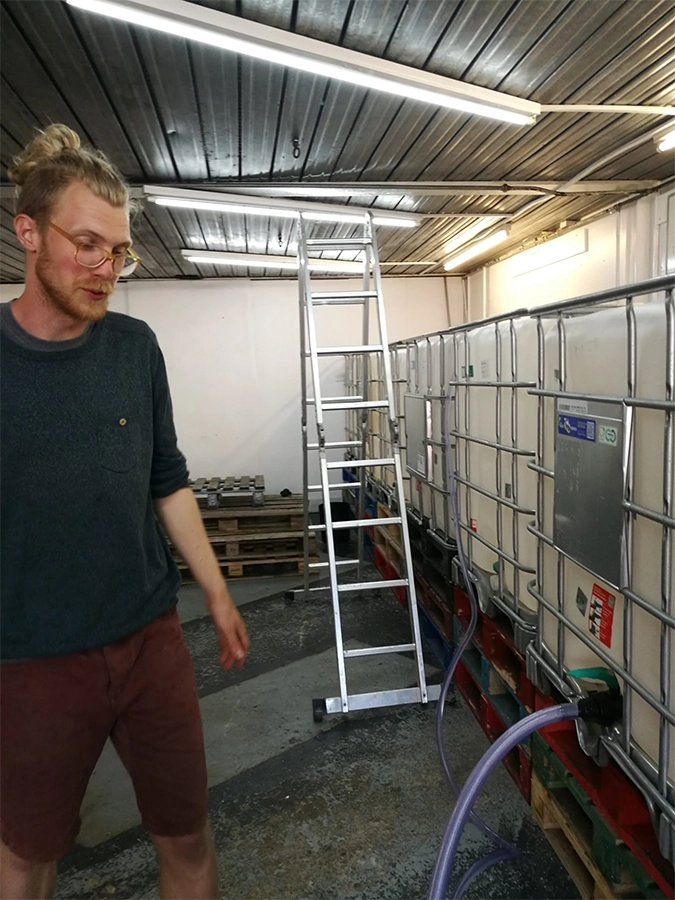
Two Raccoons digging through supply chain emissions
Did the Two Raccoons know this from the start? We asked them why they started working with their climate impact, what they knew already and what they learned along the way.
We don’t use a lot of equipment or energy so we set to find out where the majority of our emissions comes from early on. We learned about Scopes and that Scope 3 is the most critical. Then we received a local grant to measure the climate footprint of our products and started exploring our options. We didn’t see a use in spending the entire grant on a static estimation that would be valid for only a few months, so we went with CarbonCloud to track our emissions according to the newest data and get real-time updates. We wanted to be as genuine and transparent as possible, find something that works and that can measure exactly the carbon footprint of our product system because that’s biggest impact we have.
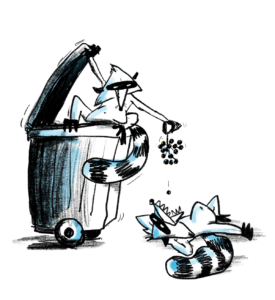
Two Raccoons were spot on in focusing on the supply chain – both for their emissions as well as their operations. The cause of food waste along the food supply chains is one to examine. Lasse and Elliott have gathered valuable insights, studying the food supply chain deeply and optimizing their ingredient scouting. Supply chain waste is a systemic problem, they remark.
It's a bit like what CarbonCloud is doing: We investigate this supply chain –the farm gate, processing companies, distribution, quality control, at the supermarket. We look at where the hotspots are and where waste happens. You’d think everything works perfectly but, we're in this globalised world and we're dealing with quantities that are surreal. When you're looking at the scales of that we've seen, you can find one tonne of fruit thrown away in just 10 minutes.
It’s a scary fact: 15% of food emissions comes from losses in the supply chain [1]. Two Raccoons have created an ingenious business that has set out to lower that – starting with Scotland! Scottish food producers, got any fruit to waste? With Two Raccoons, you can bet you don’t!
Related Posts
Nordic Seafarm: A jack of all trades ingredient, an ace in climate performance
What’s your first thought when you think of seaweed? And no, it can’t be maki rolls! Nordic Seafarm is here to make Nordic sugar kelp the top-of-mind ingredient. Multifaceted, bringing a wave of u
Why do I need to climate-footprint my food products?
There are as many reasons to climate-footprint as there are food product owners… is what we wish we could say, but that’s not 100% true and we are not ones to generalize. The truth is that, while
The Complete Guide to National Climate-Related Disclosures
5 years ago, a climate strategy was a nice-to-have, an additional brand value. 2 years ago –and for some, still– climate strategy was a long-term commitment. 2022 marks the great shift from nice-t
Planet A Foods sells 92% CO2e savings – and the food industry is buying
One could say that Planet A Food’s main product is CO2 savings. One could say that, if Planet A Food’s flagship product, Nocoa, wasn’t taking over the confectionery world. Planet A Food’s oat

